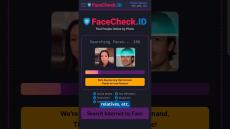|
By Steven
Every day, more people get online - most do it for leisure, but organizations are increasingly moving into the digital environment. The increasing number of these new end-point users makes it clear that the cyber world must evolve. No longer can experts argue for unique platform passwords when password fatigue is prominent, nor can cybersecurity defenders protect all the various attack junctures across multiple platforms and tools.
|
By Steven
What is there to know about a person? Certainly, their name, but how about their affiliations, philosophical beliefs, or sexual orientation? The nuanced information about a person—including those elements listed above and more—falls into a data category called “personal information” or “personally identifying information” (PII).
|
By Steven
Suppose someone left their home, got in their car, and drove to the grocery store. Much like data packets that travel over Internet highways, the car will use various pathways to reach its destination; however, once the car gets to the store, a question remains: what happened between the generating point and the destination? If nothing happened, the driver (our data) traveled safely and without incident.
|
By Steven
Ever follow an ad featuring limited-time products to a company’s web page only to find they’re selling something else entirely? Or have you added a product to a cart only to discover a laundry list of issues, from poor quality to endless fees? Bait and switch (also called “bait-and-switch” or “B&S”) is a classification of fraudulent activities that most recognize as false advertising.
|
By Steven
In 2023, based on wire fraud statistics nearly a quarter of consumers received suspicious communications, which may have occurred over text, email, phone, or social media. Of those who interacted with the sender, one in twenty consumers fell victim to wire fraud, which begins over electronic channels. That same year, consumers lost a reported $10 billion to fraudulent activities, a significant portion of which began as wire fraud.
|
By Steven
When we think of “property,” the first thing that comes to our mind might be tangible objects—items we’ve purchased, like cars and homes, or entitlements we’ve procured, like land, titles, or even honorifics. However, there is another type of property that includes intangible ownership, creations of the mind, and various assets of a nonphysical nature.
|
By Steven
Everyone has received a spam text or email at some point. Their hallmarks are widely known; they often include poor or strange grammar, suspicious links, suggested connections with companies or people, or random individuals asking for help in some capacity. Sometimes, these communications allow scammers and malicious actors to learn about their targets. These targets may be individuals, companies, vendors, software hosts, or any other entity with data worth a cent.
|
By Steven
After a bank heist, the work begins with specialized teams and plans engaged, allowing for analysis of the event, and from this analysis, the bank can prepare a response to the incident. The incident response may include stricter entry protocols, additional guards inside or around the building, or the installation of metal detectors, ID scanners, and panes of bulletproof glass surrounding the tellers.
|
By Steven
Every year, millions of people get victimized by data breaches. Criminals steal their data from the network environments of organizations, vendors, providers, institutions, and governments; with ever-increasing frequency, cybercriminals are making big moves in the cyber wars—and making billions of dollars.
|
By Steven
When the pandemic hit in 2020, our world became chaotic overnight. Throughout the nation, individuals were met with layoffs or stringent checks—pushing the financials of families to their breaking points. Simultaneously, business organizations faced similar issues; because fewer bodies were allowed in the same area, production trickled to a minimum, niche clients limited their spending, and small businesses counted the days until their doors closed.
- April 2024 (5)
- March 2024 (9)
- February 2024 (22)
- January 2024 (32)
- December 2023 (33)
- November 2023 (29)
- October 2023 (26)
- September 2023 (28)
- August 2023 (29)
- July 2023 (27)
- June 2023 (29)
- May 2023 (34)
- April 2023 (24)
- March 2023 (30)
- February 2023 (4)
- January 2023 (4)
- August 2020 (1)
IDStrong was created in 2015 to put the power of access to information back in the hands of the consumer. Since over 60 million people have been exposed to identity theft in the United States alone, we decided to combat this epidemic by giving consumers the ability to monitor all levels of their personal information. From credit report monitoring to reputation management and public records tracking - you can keep an eye on it all.
Proudly Monitoring Millions of Identity Records:
- Identity Monitoring: We monitor billions of records on the dark web and alert you if we detect that your information is exposed or traded.
- Credit Monitoring: We monitor your credit profile for any suspicious inquiries, new loans, or any credit related changes.
- Home Monitoring: We monitor your property and alert you if we detect that there has been a change of address or ownership.
- $1M Identity Theft Insurance: If you fall victim to ID theft, we will provide you with up to $1 million in coverage with a no deductible for identity theft recovery expenses.
- Lost Wallet Assistance: If your wallet is lost or stolen, we will provide you with quick and reliable help in navigating the recovery process. We will walk you through the entire process every step of the way.
- Identity Restoration: If you experience identity theft, our fraud resolution team will deliver step-by-step support to investigate and restore your identity.
Comprehensive Identity Monitoring & Protection.












